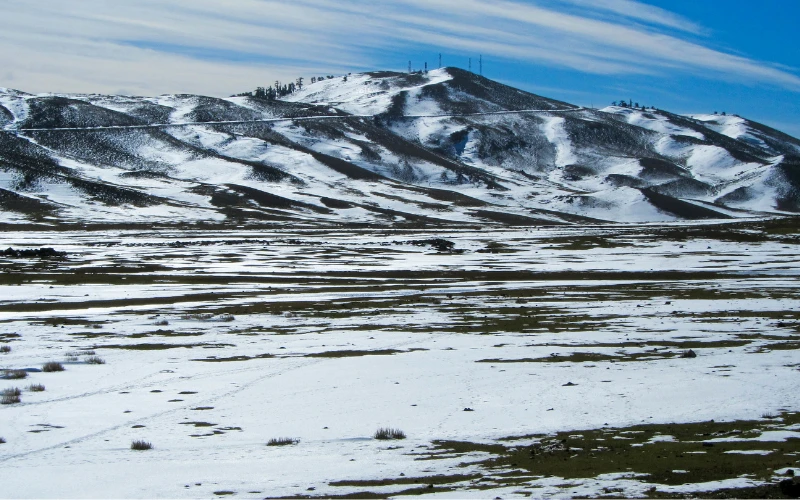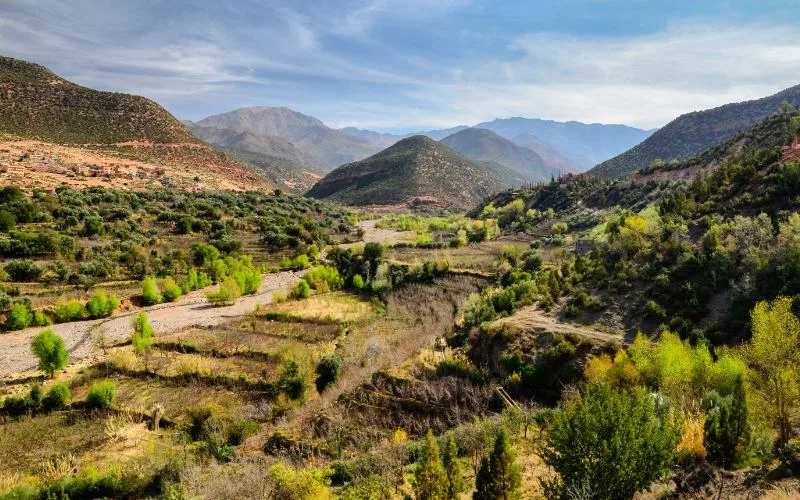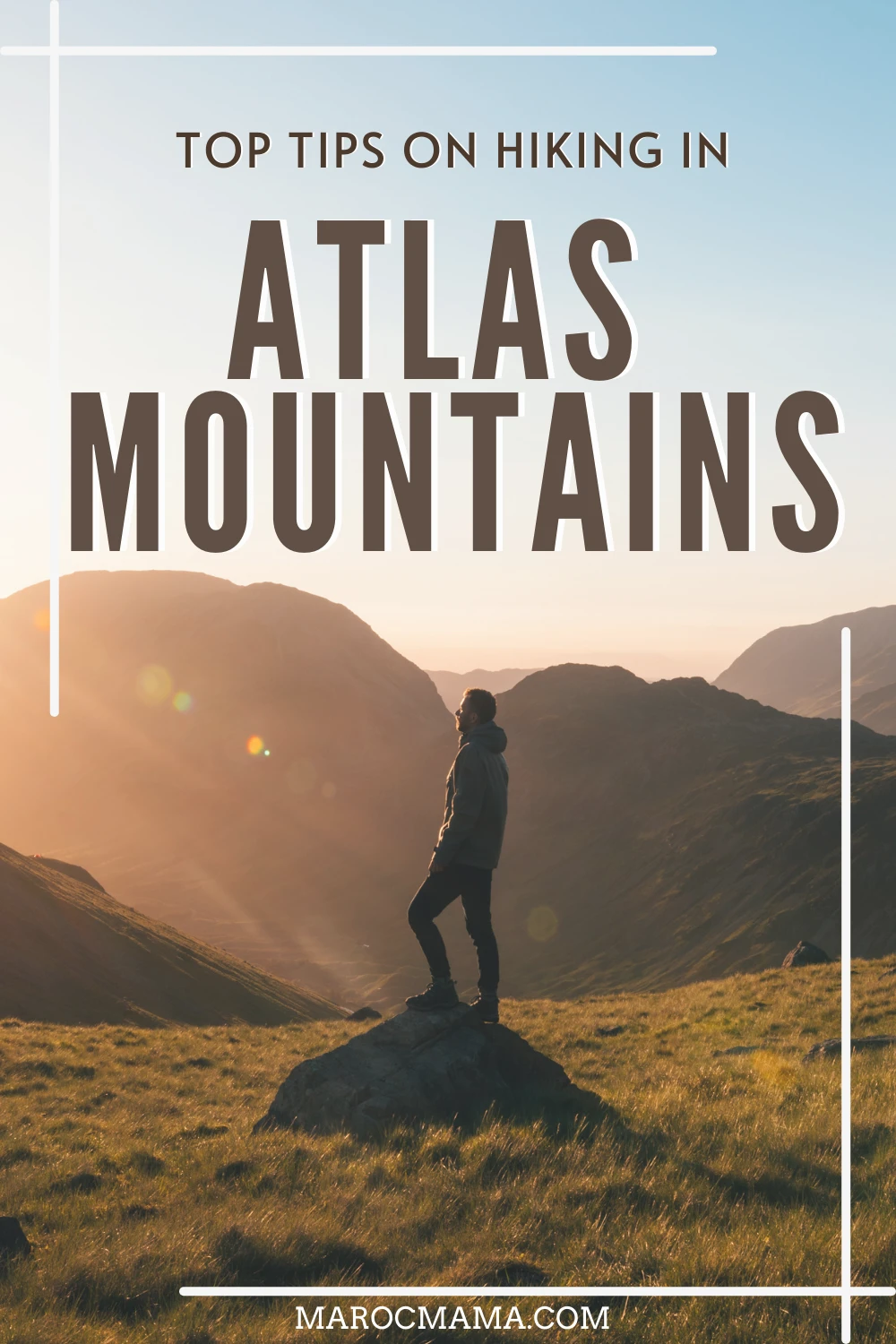One of the best experiences in Morocco is a hiking trip to the Atlas Mountains. Visiting the remote villages, soaking up the incredible landscapes, and summiting peaks, all while learning interesting facts from your mountain guide, will leave you with countless stories to tell.
Are you an amateur hiker, or just a fit individual up for the challenge? Below you will find incredible Atlas Mountains treks and what you can expect to see on your journey to reach the summit.
Hiking in Morocco – What Will You See?
Hiking in Morocco gives you a unique view into the Imazighen people’s lives, also known as Berbers. While walking in the Atlas Mountains, keep an ear out for the local music – or Ahidus. It is expressed through collective dance and song and originated among tribes in the Middle and Eastern High Atlas.
Morocco’s remote villages are seldom visited by tourists and provide you with an authentic experience during your hike. You can expect warm welcomes and a chance to absorb the Berbers’ architecture and language in the Atlas Mountains.
Why are the Atlas Mountain Trekking Routes Famous?
The mountain range separates the Mediterranean and the Atlantic coastlines from the Sahara Desert. It is famous for having the highest peak in North Africa, Mount Toubkal.
The arid environment is inhabited by scattered communities of Berbers, an ethnic group native to North Africa. Bring your pair of binoculars for the best chance of spotting Atlas Deer, Barbary leopard, wild cat, jackal, red fox, and polecat ferret, among others.
The valleys are more luscious and have juniper forests, almond trees, and argan groves. The Atlas Mountains in Morocco consist of three ranges, the Middle Atlas, the High Atlas, and the Anti-Atlas.
The High Atlas
The High Atlas Mountains serve as a natural barricade between the Sahara Desert in the South and the Atlantic Ocean. At the foot of the mountain range lies Morocco’s own ‘Hollywood’, the fortified village of Aït Benhaddou. It has appeared in many films with the High Atlas in the backdrop.
The Middle Atlas
The Middle Atlas is the northernmost of the three Atlas Mountains and covers a vast area with heavily forested slopes of predominantly oak and cedar trees. The air is typically cooler than in the Moroccan towns and inland cities.
This is the most fertile of the Atlas ranges and it has several peaks over 3000m above sea level, with Jebel Bou Naceur reaching standing the tallest (3340m).
The Anti-Atlas
The Anti-Atlas is the southernmost range of the Atlas Mountains. It starts near the Atlantic Ocean and extends 500km inland. It’s the least-visited region of the Atlas Mountains and so has fewer options for accomodation.
Summer temperatures can soar due to the proximity to the Sahara. It is recommended to avoid the summer heat and travel during the shoulder seasons.

Weather in the Atlas Mountains
If you don’t mind snow, the weather in the Atlas Mountains is suitable for hiking all year round. The seasons in Morocco are similar to other countries in the Northern Hemisphere, with winter from December to February and summer from June to August.
While the winter is cold and snowy, it is enjoyable. As you head south towards the Sahara desert, the climate becomes hotter and drier. The summertime is hottest in the valleys while the areas of higher altitude remain pleasant.
The best time to hike in the Atlas Mountains is from March through to June. This will mean you’re there for spring and the beginning of summer, when the temperatures are pleasant and the routes fairly dry (there will still be snow at higher altitudes).
Summer
In the High Atlas Mountains near the town of Imlil, the average temperature in summer is 17℃ (64℉), and the maximum temperature is 24.8℃ (77℉). July is typically the warmest month.
Summer in the modern town of Ifrane, located in the Middle Atlas Mountains, reaches average temperatures of 21℃ (70.2℉) and maximum temperatures of 34℃ (93.2℉).
In the Anti-Atlas Mountains the high temperatures in summer average 27.4℃ (81.4℉) with maximum temperatures reaching 33.9℃ (93℉).
Autumn

In Imlil, the average high temperature between August to October is 12.8℃ (55℉) and maximum temperatures of 19.3℃ (66.8℉).
Autumn in the Middle Atlas Mountains sees average high temperatures of 25℃ (76.5℉) and maximum temperatures of 35℃ (95℉).
In the Anti-Atlas Mountains experiences average high temperatures of 14.4℃ (57.9℉) and maximum temperatures of 27.8℃ (82℉).
Winter

During winter, Imlil has average temperatures of 0.4℃ (32.7℉) and experiences a minimum temperature of -4℃ (24.7℉). January brings the lowest temperatures.
Ifrane experiences average temperatures of 5℃ (32.9℉) and holds the record for the lowest temperature observed in Africa of -23℃ (-11℉).
In the Anti-Atlas Mountains, the average high temperature in Kelaam M’gouna during winter is 7.5℃ (45.5℉) and minimum temperatures reach 0.6℃ (33.1℉).
Spring

Imlil in spring experiences average highs of 9.9℃ (49.8℉) and maximum temperatures of 16.7℃ (62.1℉).
The average temperatures in Ifrane during spring is 13.2℃ (55.8℉) and maximum temperatures of 27℃ (80.6℉).
In the Anti-Atlas Mountains, the arrival of spring is celebrated in Kalaat M’Gouna during the sweet-smelling ‘roses festival’. The city experiences average temperatures of 16.3℃ (61.4℉) from August to October.
What should you wear to the Atlas Mountains?
For anything more than a half-day hike with a guide, you can prepare as you would for an alpine hiking trip. You will want to wear warm clothing, a weather-proof jacket, hiking boots, and a hat. Bring a pair of sneakers to give your boots a break following your day’s hike.
While packing light is important, you will need a backpack large enough to carry your sleeping bag, a first aid kit, and potentially the specialized equipment for snow and ice hikes. Depending on the hike you are doing, your guide and outfitter should provide you with a comprehensive list.
Best Atlas Mountains Trekking Areas
From the North of Morocco in the High Atlas Mountains to the South in the Anti-Atlas Mountains, the best areas to hike vary in difficulty, length, and altitude. Remember, hiking can be a strenuous but rewarding activity.
During your trek you will visit areas with views unattainable by car. You can decide once you’ve read the breakdown of each area below which hiking route will be most suitable for you.
Aourwiz Waterfall
Aourwiz Waterfall is one of the most pleasant locations to visit while hiking in the High Atlas Mountains. Known as the Cascade of Aourwiz, it’s located near the village of Tizi Oussem. The area is less arid, and almost appears out of place when the water crashes down the two tiers of the rock face.
Jbel Saghro
A rugged range offering three trekking points with access to flat-topped mesas that have deep gorges. Located south of the High Atlas Mountains, Jbel Saghro is an eastern extension of the Anti-Atlas Mountains. Located inland, the area is desolate and only receives 100mm of rain per year.
The highest summit of the range is Amalou n’Mansour (2712m), while the most important mountain pass of the range is an unpaved road called Tizi n’Tazazert (2,283m high).
M’Goun Mountain
The M’Goun Traverse follows a river upstream to its source before crossing the mountain range and descending into the valley below. The hike is moderately difficult and offers incredible views throughout. Taking between 4 and 6 days to complete, it is a perfect hike to experience the High Atlas Mountains.
The mountain trek takes place across gorges, barren slopes, and forested areas. It’s 57km in length and is a lovely challenge for amateur hikers.
Mount Toubkal
How long does it take to climb Mount Toubkal? Give yourself four days to complete the hike to the highest peak in North Africa (4167m). Fit yet inexperienced hikers can manage to reach the summit comfortably over three days. Winter hiking at these high altitudes requires crampons and ice-picks.
Starting from the lower altitude of Imi Ourhlad (1400m above sea level), you can travel to the top during a four-day guided trek of Mount Toubkal.
Safety Tips to Keep in Mind
The first safety tip, and arguably the most important, would be do not attempt a hike on your own. A guide is mandatory on most routes in Morocco, and traveling without a guide in remote areas is irresponsible. Hire an experienced, licensed mountain guide and benefit from the local knowledge shared during your trek.
You will want to stay hydrated during the day. Packing a survival straw means you can drink from water sources on route without needing to carry large amounts of clean drinking water with you.
If it would make you feel safer, female travelers can join all-women tours or hire a female guide. Hafida Hdoubane, Morocco’s first certified female mountain guide, is a strong figure in the Moroccan trekking community. She has inspired other women to follow in her footsteps.
Top Tips for Hiking in the Atlas Mountains:
- Look for routes to suit you – slow and steady reaches the top
- Plan for more time than you need to summit
- Consider trekking to smaller, less crowded peaks
- Hire a guide for your trek; certified guides are well informed and experienced
- The month of fasting during Ramadan may affect the availability of mountain guides
Where Should You Start Your Atlas Mountain Trek?
Fly into Casablanca (the busiest), Marrakech or Agadir airport. Each of the three locations has its benefits, with tour operators offering transportation to the nearest Atlas Mountains. Alternatively, you can travel by shuttle to meet your guide at the starting point of your trek.
Casablanca
Despite being 350km away from the tallest mountain peak, Casablanca is still considered a good starting point for a trek into the Moroccan mountains. Tour operators offer transportation to all other areas of Morocco starting here.
Marrakech
Marrakech is the most popular starting point for tours and trekking to the High Atlas and the Middle Atlas Mountains. The mountains are less than 50km from the medina in Marrakech.
Agadir
Agadir is located on the Atlantic Coast and is near the foot of the Anti-Atlas Mountains. It’s a popular starting point for hikers hoping to enjoy the cool Atlantic ocean before attempting to reach the peaks of Jbel Saghro and Amalou n’Mansour.
Imlil
Most treks up Mount Toubkal begin at the village of Imlil, located at 1740m above sea level. From Imlil, hiking routes typically follow the Azzaden or Wawgant valleys and don’t require climbing to reach the summit.
N’Kob
The rural municipality of N’kob is a great starting point for hikes in the eastern areas of the Anti-Atlas Mountains. The Jebel Saghro and Amalou n’Mansour treks begin from here or further north from the city of Kalaat M’Gouna, known as the ‘valley of the roses’.
Tabant
Start your trek from the tiny town of Tabant in the Aït Bougmez valley. The area is the training ground for Morocco’s future mountain guides. The town offers basic food supplies and has basic accommodation available.
What Makes a Good Moroccan Mountain Guide?
Official Moroccan mountain guides pass a demanding three-day selection test to receive admission to the training course. Once accepted, they receive six months of training at the above-mentioned Centre de Formation Aux Métiers de Montagne (CFAMM).
Certified guides are prepared to handle first aid emergencies and have the necessary navigation and survival skills required to work in the arid area. The vast majority of mountain guides have grown up in the mountains, speak the local language and have the right connections to make your experience enjoyable.
Why Wait? Plan your Morrocan Trek today
Whether you fly into Casablanca, Marrakech, or Agadir to hike in the Atlas Mountains, you will leave having experienced the heart of Morocco. Your experience visiting remote villages, crossing gorges, hiking through Juniper forests, or tackling snowy peaks will remain with you as some of your fondest stories of this African Country.
A trek in the Atlas Mountains in Morocco is possible all year round, so what are you waiting for?
Visit our specific post if you have any unanswered questions about Trekking in Morocco.
